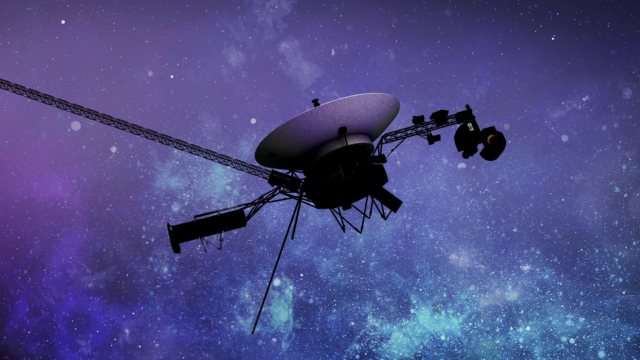The Voyager 1 spacecraft sent a new signal that contains valuable data, which may save the aging probe. Engineers at NASA’s Jet Propulsion Laboratory are currently looking for discrepancies in the message in order to find out why the spacecraft—the farthest piece of human technology from Earth—has been speaking gibberish for the past few months.
On March 3, the team behind the Voyager 1 mission received a promising signal from the spacecraft’s flight data system (FDS). Although it wasn’t in the format regularly used by Voyager 1 when the spacecraft is operating normally, it was still different than the unreadable data stream that the mission has been transmitting since it developed an odd glitch in November 2023.
The mission team was initially confused by the new message, but an engineer at NASA’s Deep Space Network, radio antennas that the space agency uses to communicate with its deep space missions, decoded the signal and found that it contains a readout of the entire FDS memory, NASA wrote in a blog update.
“The FDS memory includes its code, or instructions for what to do, as well as variables, or values used in the code that can change based on commands or the spacecraft’s status,” the space agency said.
Voyager 1 transmitted this data in response to the team sending a “poke” to the spacecraft’s data system on March 1, or a command that gently prompts FDS “to try different sequences in its software package in case the issue could be resolved by going around a corrupted section,” according to NASA.
FDS collects data from Voyager’s science instruments, as well as engineering data about the health of the spacecraft, and combines them into a single package that’s transmitted to Earth through one of the probe’s subsystems, the telemetry modulation unit (TMU), in binary code.
The Voyager 1 team suspects that the ongoing anomaly may have something to do with FDS and TMU having trouble communicating with one another. As a result, TMU has been sending data to mission control in a repeating pattern of ones and zeroes.
For months, things have been looking bleak for the Voyager 1 mission, which has been cruising through the cosmos for more than 46 years. With the new signal, however, the team may be able to pinpoint the exact source of the glitch by comparing this memory readout with a previous one to look for discrepancies in the code.
Voyager 1 launched in 1977, less than a month after its twin probe, Voyager 2, began its own journey to space. The craft ventured into interstellar space in August 2012, becoming the first spacecraft to leave the heliosphere.
Voyager 1 is currently 15.14 billion miles away (24.4 billion kilometers), flying at a speed of 38,000 miles per hour (61,155 kilometers per hour). Because of this vast distance, it takes around two days to send a message and receive a reply from the spacecraft. So, NASA is asking us to be patient as it works to resolve the issue with its iconic mission.
“The team is analyzing the readout,” the space agency wrote. “Using that information to devise a potential solution and attempt to put it into action will take time.”
